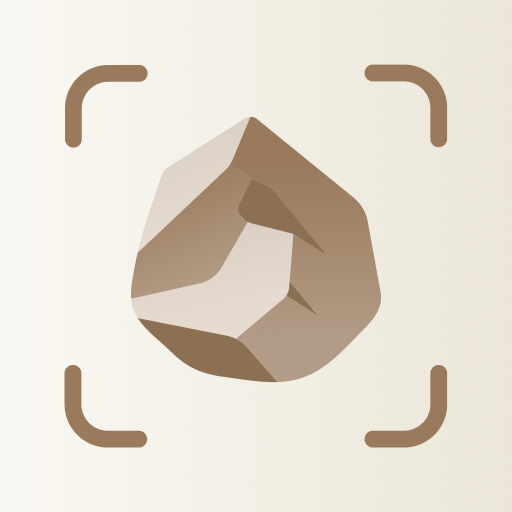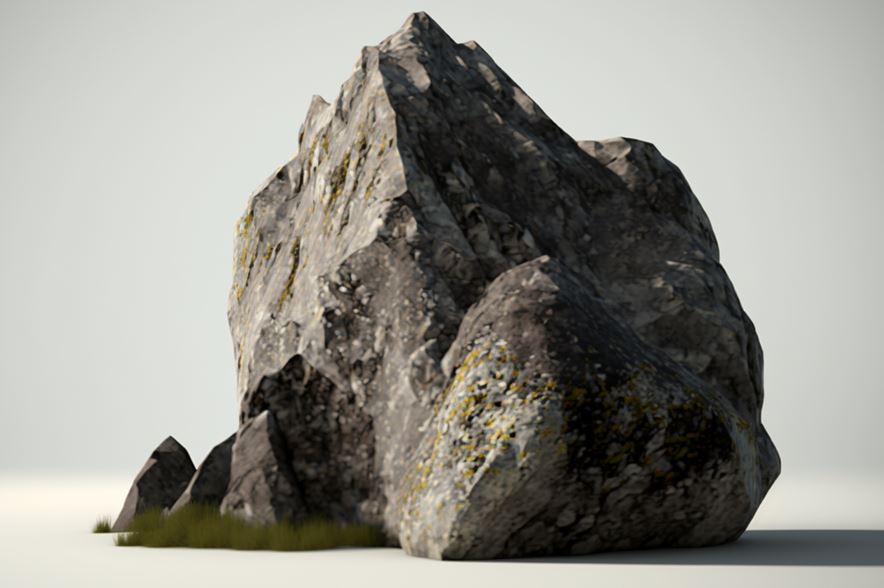Rock Identifier
About this app
If you possess an interest in geology or harbor a general curiosity regarding the various stones encountered in your daily routine, the Rock Identifier app presents itself as a valuable resource. This application serves as a convenient tool enabling users to identify an extensive range of rocks and minerals through simple interactions with their smartphone device.
This examination will encompass an in-depth analysis of the app's functionalities, advantages, and drawbacks, elucidate the most effective methods for utilizing its features, and provide a comparative overview with alternative techniques for stone identification. Engage in a comprehensive exploration of the realm of stone identification through this technological solution.
Overview of Stone Identification Apps
Stone identification applications have emerged as critical tools for both amateur enthusiasts and professional geologists. These applications offer a range of features including visual recognition, geological analysis, and mineral classification within a user-friendly interface, thereby modernizing the conventional process of identifying rocks into a streamlined digital experience.
These applications are intricately designed to accurately identify a diverse array of stones and minerals by leveraging advanced image recognition technology and seamless integration with extensive databases. Users can conveniently capture a photo of a rock or mineral specimen and promptly access detailed information regarding its composition and geological source.
Beyond facilitating efficient fieldwork through swift on-the-go identification, these applications also function as valuable educational tools. They allow enthusiasts and students to enrich their understanding of geology through interactive learning experiences. Essentially, these applications represent a transformative shift in how individuals interact with and expand their knowledge of the Earth's geological marvels.
Features of the Rock Identifier App
The Rock Identifier application is a sophisticated tool created to aid geologists and rock enthusiasts in precisely identifying a variety of rock types using cutting-edge visual recognition technology and an extensive database of geological data.
Image Recognition Technology
The Rock Identifier app employs state-of-the-art image recognition technology to analyze the crystal patterns and visual characteristics of rocks and minerals, offering users precise identification results.
This sophisticated technology operates by comparing the distinct crystal patterns and visual attributes of the rocks and minerals captured through the app's camera with an extensive database of known specimens. Visual recognition plays a critical role in the identification process, enabling the app to correlate these patterns and features with existing data to ascertain the most likely identification. By improving the accuracy of mineral analysis, users can rely on the app to furnish accurate results based on key visual elements unique to each rock or mineral type.
Database of Rocks and Minerals
The application offers an expansive database containing an array of rocks and minerals, each systematically categorized according to their geological attributes and mineral composition, thereby enabling thorough identification and classification.
Within this database, users have the opportunity to explore in-depth information about various types of rocks such as granite, basalt, limestone, and quartzite. For example, granite is distinguished by its coarse-grained texture and high silica content, while basalt exhibits a fine-grained structure and is abundant in iron and magnesium. By utilizing this repository of geological data, both enthusiasts and professional geologists can augment their knowledge of diverse rock formations and their distinct mineral compositions.
Additional Tools and Resources
The Rock Identifier app, beyond its fundamental identification features, provides a range of supplementary tools and resources tailored specifically for geologists and fieldwork. This includes the option for in-app purchases to access more advanced functionalities and educational content.
A significant resource within the app is the detailed field guides, offering extensive information on various types of rocks and minerals. These guides assist users in accurately identifying specimens during their field explorations. Moreover, the educational content available through the app comprises in-depth articles, videos, and tutorials designed to enrich users' comprehension of geological concepts and processes. These features not only support geologists in their fieldwork but also present valuable learning opportunities for students and budding rock enthusiasts.
Pros and Cons of Using a Rock Identifier App
Utilizing a rock identifier application presents several advantages, such as expedited rock identification and precise mineral analysis. However, it also entails specific limitations and drawbacks that users should take into consideration.
Benefits of Convenience and Accuracy
One of the primary advantages of utilizing a rock identifier app is the convenience it offers, enabling users to promptly and accurately identify rocks and minerals, even while engaging in outdoor activities, due to the integrated GPS functionality.
The GPS feature allows users to easily determine their precise location and access real-time geological information, thereby improving the efficiency of fieldwork. This functionality not only saves time but also guarantees that the identified rocks are positioned within their correct geological context.
The application's capacity to supply contextual data based on the user's location renders it a valuable tool for geologists, hikers, and outdoor enthusiasts. By streamlining the identification process and enableing users to comprehend the geological significance of their discoveries, the app transforms the way individuals engage with the natural environment.
Potential Limitations and Drawbacks
Rock identifier apps, despite their numerous benefits, have inherent limitations and disadvantages that must be considered. These applications may exhibit occasional inaccuracies in identifying complex rocks and rely heavily on the functionality of smartphones.
Challenges may arise when these apps attempt to accurately identify rare or obscure rocks with intricate characteristics, potentially leading to misclassifications or incomplete information. Moreover, the dependence on internet connectivity can impede their utility in remote areas or regions with inadequate network coverage, thereby restricting their accessibility. The effectiveness of identification is largely contingent on the camera capabilities of the user's smartphone, which could result in subpar or unclear images that compromise the accuracy of rock recognition. Additionally, there is a valid concern that users may excessively rely on these apps, neglecting the opportunity to enhance their manual rock identification skills and deepen their understanding of geology.
How to Use the Rock Identifier App
The utilization of the Rock Identifier app entails a straightforward procedure that encompasses the capturing of images of rocks and minerals. By leveraging the app's user-friendly interface, users can analyze and identify the specimens efficiently. Additionally, users have the option to utilize supplementary features such as the field guide to access more detailed information on the identified rocks and minerals.
Step-by-Step Guide
To initiate the utilization of the Rock Identifier app, please adhere to this detailed guide: commence by launching the app and capturing a high-quality image of the rock. Subsequently, allow the advanced algorithms and user-friendly interface of the app to analyze the image meticulously, providing an in-depth identification of the rock.
Upon capturing the image, it is imperative to ensure optimal lighting conditions to accentuate critical features. Place the rock on a plain background to enhance contrast. When utilizing the app's camera function, ensure precise focus and maintain the rock at the center of the frame.
Following the image capture, carefully review it to confirm clarity and showcase essential details. Subsequently, allow the app to process the image and exercise patience as the algorithms undertake their analytical procedures. During the identification wait period, consider incorporating field notes such as location, color, or texture to enrich the record comprehensively.
Comparing the Rock Identifier App to Other Options
When evaluating the Rock Identifier app against alternative stone identification methods, it becomes apparent that digital tools notably improve the accuracy and efficiency of identification. However, traditional methods and other applications present distinctive features and functionalities of their own.
Other Stone Identification Methods
Conventional stone identification methods, such as utilizing a petrographic microscope and field identification techniques, present a tactile approach to comprehending geological context and mineral properties. These methodologies entail scrutinizing thin rock sections under a microscope to examine their mineral composition and texture, thereby yielding insights into the rock's formation process.
Field identification techniques, conversely, necessitate the geologist's analysis of physical attributes like color, hardness, and crystal structure within the natural setting. While traditional methods afford a comprehensive grasp of the stone's composition and genesis, they demand substantial time and specialized expertise.
In contrast, digital identification tools, such as portable X-ray fluorescence analyzers, furnish expeditious outcomes and can ascertain minerals based on their elemental composition, facilitating prompt on-site analysis. Notwithstanding their efficiency, these tools may lack the intricate detail and comprehensive information that traditional methods offer.
Other Rock Identifier Apps
Numerous rock identifier applications are currently available in the market, each offering distinctive features and varying degrees of accuracy and user experience. It is imperative to conduct a thorough comparison of these applications before determining the most suitable option for individual requirements.
One prominent application, Rock Finder, features an extensive database encompassing various types of rocks and provides users with the capability to upload photos for identification purposes. Nevertheless, some users have reported instances of occasional misidentifications, leading to potential frustrations.
In contrast, the Pebble Quest application has received acclaim for its sleek interface design and efficient identification process. However, it may be lacking in the depth of its rock library when compared to other available options.
Conversely, the Rock Detective application distinguishes itself through its enriching educational content. Nevertheless, individuals with limited experience in rock identification may find themselves overwhelmed by the technical terminology utilized within the application. It is imperative to carefully evaluate these strengths and weaknesses when selecting the application that best aligns with one's preferences and level of expertise in the field of rock identification.
Related Apps
-
Roku Smart HomeGETHome and Lifestyle
-
Amazon AlexaGETHome and Lifestyle
-
Life360: Find Family & FriendsGETHome and Lifestyle


















